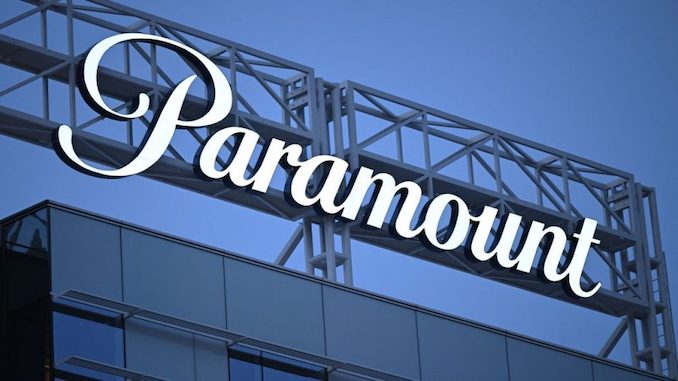
- Weekend Negotiations Fail to Save Paramount’s Floundering Merger
- Inside Failed Skydance-Paramount Deal Points
- Shareholders Voice Concerns Over Redstone’s Sweetheart Terms
- Worldwide Film & Television Distribution Intelligence
- Paramount’s Mismanagement Exposed as Proposed Merger Falls Apart
- FilmTake Away: Paramount Will Likely Not Exist in Its Current Form Much Longer
Skydance’s merger talks with Paramount collapsed in epic fashion on Tuesday after Paramount’s controlling shareholder canceled the deal, ending an attempt to turn around the troubled studio.
The deal fell through just as it was about to be finalized. Right before Paramount’s special committee voted on the deal, lawyers for National Amusements emailed the committee to say it ended the discussions.
The email stated that although National Amusements and Skydance had reached an agreement on most financial terms, they could not agree on the remaining terms, which related to a massive payout to the daughter of long-time Paramount head Sumner Redstone.
Weekend Negotiations Fail to Save Paramount’s Floundering Merger
Despite advisers working through the weekend to reach a compromise on unresolved issues, the efforts ultimately proved futile. As progress seemed to be made, a committee of Paramount’s board members evaluating the merger plan abruptly fired the public relations firm they had been using, highlighting the disarray and discord within the company.
The protracted negotiations, dragging on from late last year until this week, were plagued by significant tension. The extended talks, rife with frequent leaks, underscored the deep discord between both sides. This lack of harmonious negotiations clearly indicates Paramount’s ongoing mismanagement and internal chaos.
Skydance Media, led by the son of multi-billionaire Oracle founder Larry Ellison, has been in discussions with Shari Redstone’s National Amusements Inc., which controls 77% of Paramount’s voting shares but only 10% of its equity for the last six months about possible merger following similar talks last year. Initially criticized as a too much sweetheart deal for Redstone, Skydance’s revised bid satisfied some skeptics but not all.
Inside Failed Skydance-Paramount Deal Points
The failed deal was supported by RedBird Capital, KKR, and Paramount’s independent special committee. It would have provided Redstone $2 billion for National Amusements, which owns 77% of Paramount’s Class A voting stock and 5.2% of its Class B common stock. The second step involved Skydance merging with Paramount to create a combined company.
The deal, which does not require a shareholder vote, would have also seen Skydance and RedBird contribute $1.5 billion in cash to help reduce Paramount’s debt. Skydance would then buy nearly 50% of Paramount’s Class B shares at $15 each. Upon closing, Skydance and RedBird would have owned two-thirds of Paramount, with Class B shareholders owning the remaining third. All in, both Class A and B shares would have cost Skydance and its partners $7.9 billion.
Shareholders Voice Concerns Over Redstone’s Sweetheart Terms
Last week, Paramount shareholder Aspen Sky Trust criticized reports of a Skydance agreement to acquire the media conglomerate, calling it an “undervalued bid” that primarily benefits non-executive chair Shari Redstone to the detriment of most other shareholders. The firm, which owns approximately 6.57 million shares in Paramount, expressed its opposition in a third letter.
As Skydance, Paramount, and its parent company, National Amusements, reached the final stages of negotiations, the deal garnered more attention from disgruntled investors. In response, Shari Redstone, Paramount’s controlling shareholder, wanted Skydance to agree to provide some legal protection for the deal in case investors filed a lawsuit, which was likely since the deal punished shareholders while providing a windfall for Sumner’s daughter. Under this strain, the deal collapsed just as it was about to be finalized.
According to insiders, Redstone was reportedly upset that Skydance’s revised terms devalued National Amusements from $2 billion to $1.7 billion, impacting her personal holdings.
Get Instant Access to How Much Streamers Like Paramount+, Hulu, Amazon, and Netflix Pay to License Films and Shows Worldwide.
Worldwide Film & Television Distribution Intelligence
Get unparalleled access to market intelligence reports that draw on financial data and insights from dozens of content distribution deals worldwide between key industry participants, including — Distributors, Producers, MPVDs, and Streaming Exhibitors.

Film and Series distribution rates and terms deriving from dozens of agreements for rights to transmit films and episodic television via PayTV and SVOD.
Choose flexible options for single-user PDF downloads.
Licensing Terms & Included Programs:
Pay-1 & SVOD Rate Cards for Motion Pictures and Series Exhibited Worldwide in Multiple Availability Windows
- Motion Pictures: Pay-1, First Run, Second Window Features, Recent Library Features (Tiers AAA,A,B,C), Library Features (Tiers AAA,A,B,C), Current and Premium Made-For-TV Films and Direct-To-Video Films, covering many license periods over the last decade
- Episodic TV: Current, Premium, Premium Catalog (1HR & 1/2HR), Catalog Series (1HR & 1/2HR), and Catalog Miniseries + Case Studies on Current Mega Hit, Catalog Mega Hit, and Premium Catalog, covering many licensing terms from 2012-2024
- Because most-favored-nation rates operate in practice, the rates and terms apply to a diverse range of content and distributors worldwide in multiple availability windows.
Paramount’s Mismanagement Exposed as Proposed Merger Falls Apart
Paramount continues to bleed hundreds of millions of dollars annually on its streaming business, including the struggling Paramount+. This ongoing financial hemorrhage highlights the company’s long-standing management issues.
Skydance, too, finds itself at a critical juncture. The collapse of the merger deal is expected to strain its relationship with Paramount, a partnership responsible for many of Paramount’s blockbusters. With the deal in ruins, Paramount’s management woes are more apparent than ever, threatening to destabilize its partnerships and business prospects further. This collapse will also likely see Skydance partner with another studio.
Paramount Global’s stock has substantially declined in recent years, plummeting to about one-third of its pre-lockdown value in 2019 when CBS and Viacom reunited. Despite the downward trend, the past three months have brought a nearly 30% rise in shares, fueled by various merger and acquisition rumors, including a less likely deal involving Sony Pictures Entertainment and Apollo Global Management. However, shares were down 8% in after hours trading on Tuesday after the news broke.
Previously, Sony Pictures Entertainment and Apollo Global Management submitted a joint $26 billion all-cash offer for the company. This plan proposed that Sony take a majority stake and operational control while Apollo would take a minority stake. This bid followed Apollo’s rejected offer to acquire Paramount Pictures solely. Despite signing NDAs to begin discussions with Paramount, Sony and Apollo have since backed away from the original offer.
The self-inflicted leadership confusion at Paramount, with three executives sharing CEO duties, including the CEOs of CBS Networks, Showtime/MTV, and Paramount Pictures, has introduced new challenges. These executives, more experienced in entertainment than financial operations, must now manage the company’s public profile and strategic vision amid ongoing speculation about Paramount’s future.
Executives have stressed that streaming is crucial as audiences shift from linear. The company aims to transform streaming to move closer to profitability by reducing non-content costs, targeting around $500 million in annual savings. Paramount is discussing divesting some of our assets to unlock value, including negotiations to sell BET Networks.
FilmTake Away: Paramount Will Likely Not Exist in Its Current Form Much Longer
The breakdown of the Paramount-Skydance merger represents another critical failure of the iconic studio since Sumner Redstone died in 2020, and many would argue that it started years before his passing. Paramount desperately needs effective leadership to save the company from being picked apart in a likely bankruptcy if management continues down its current path.